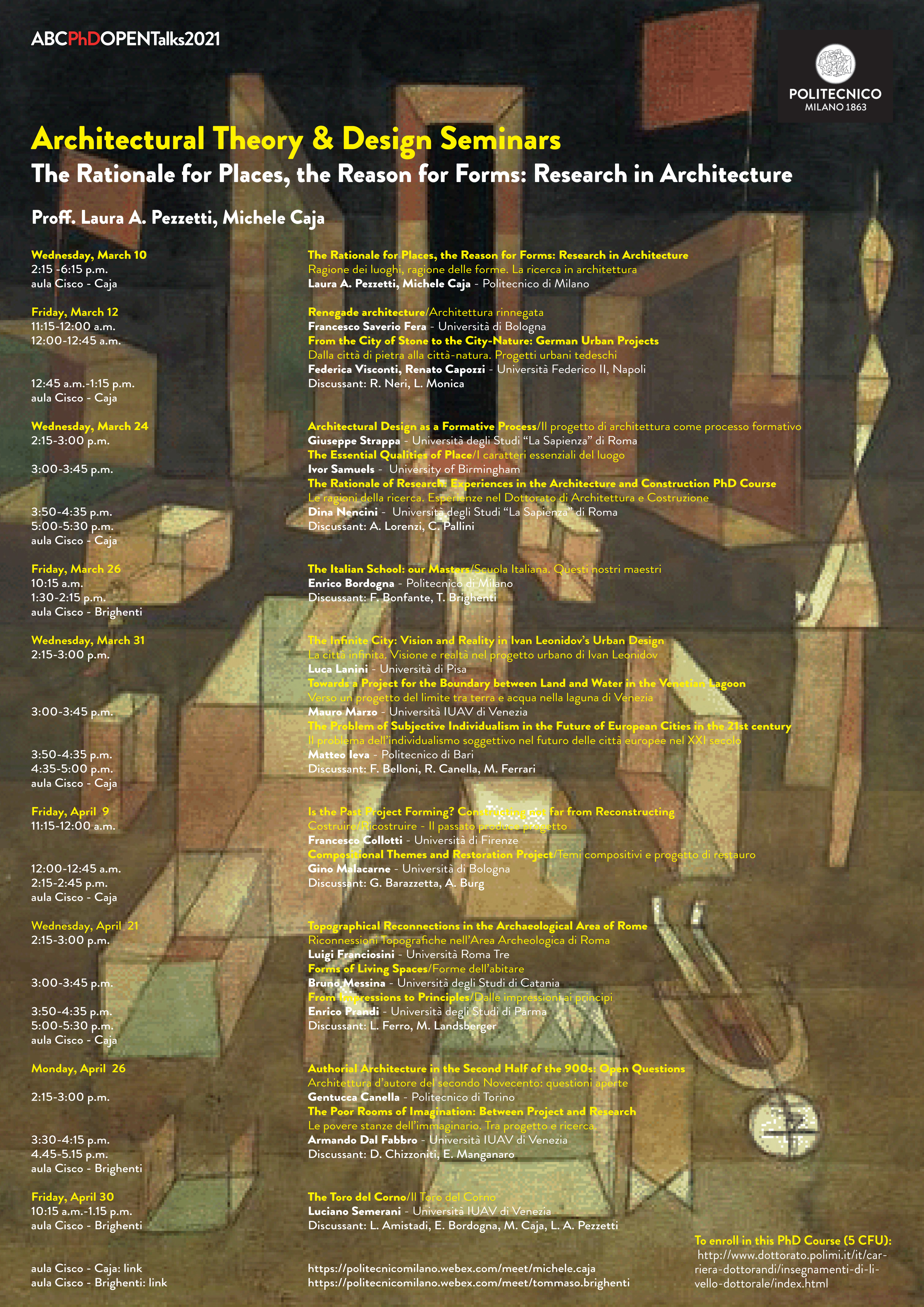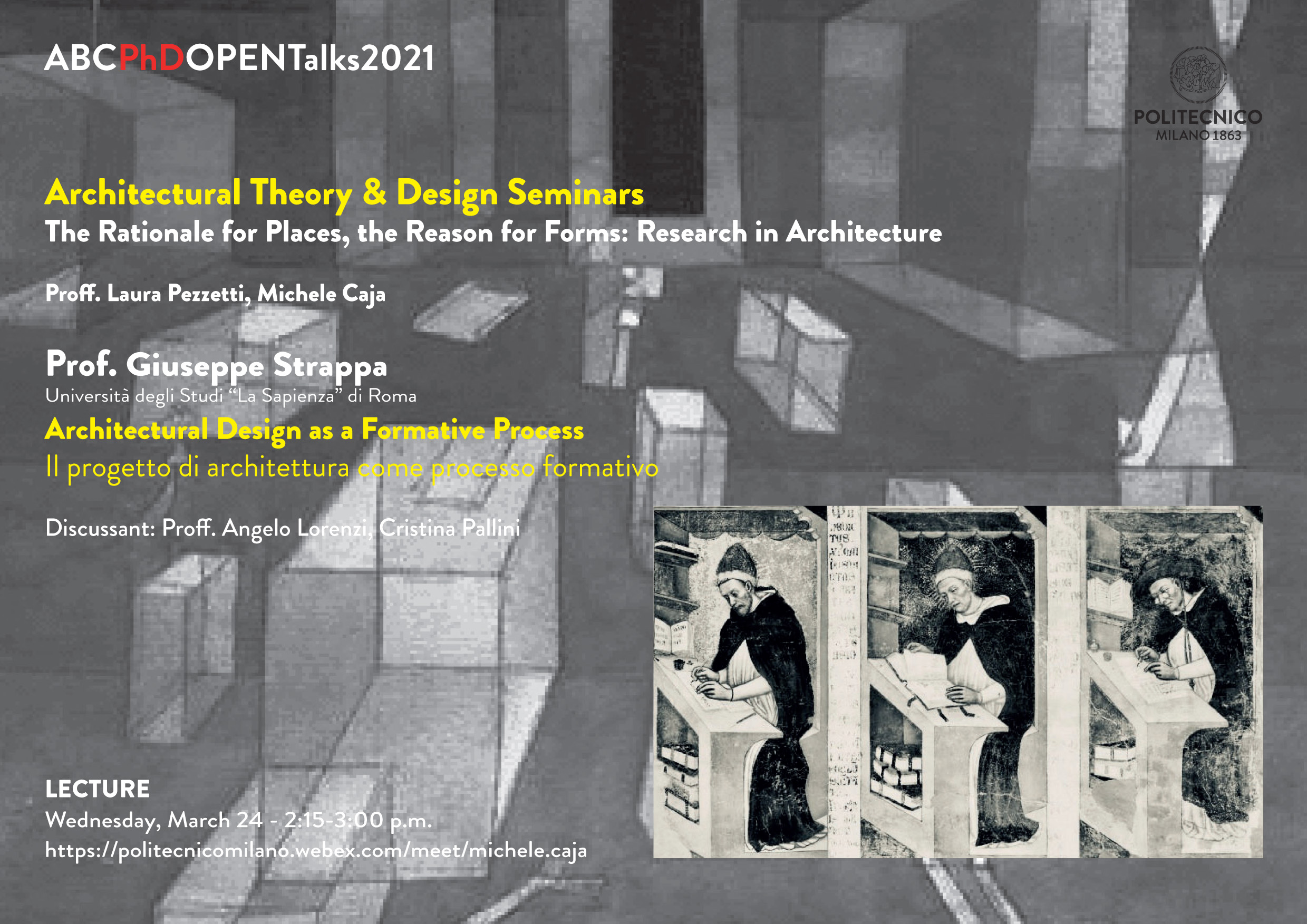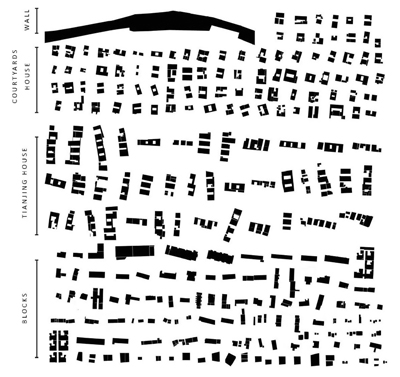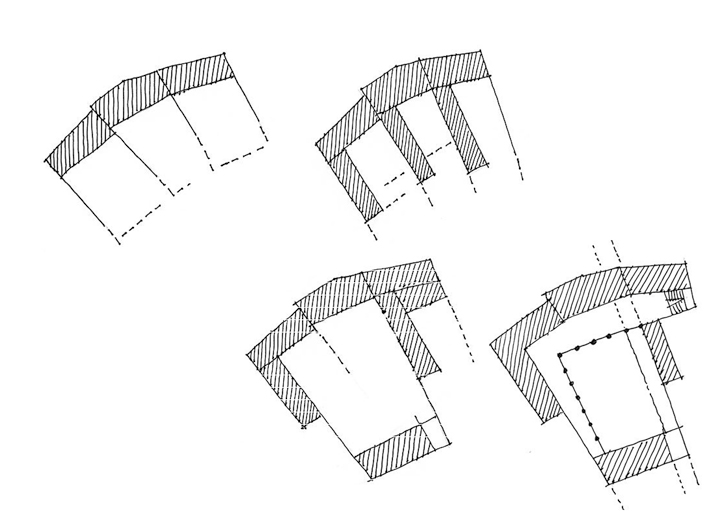Architectural Theory & Design Seminars
The Rationale for Places, the Reason for Forms: Research in Architecture
Proff. Laura A. Pezzetti, Michele Caja

Click here : Seminario_PHD_Calendario 03.04
Wednesday, March 24 Architectural Design as a Formative Process/Il progetto di architettura come processo formativo
2:15-3:00 p.m. Giuseppe Strappa – Università degli Studi “La Sapienza” di Roma
The Essential Qualities of Place/I caratteri essenziali del luogo
3:00-3:45 p.m. Ivor Samuels – University of Birmingham
The Rationale of Research: Experiences in the Architecture and Construction PhD Course
Le ragioni della ricerca. Esperienze nel Dottorato di Architettura e Costruzione
3:50-4:35 p.m. Dina Nencini – Università degli Studi “La Sapienza” di Roma
5:00-5:30 p.m. Discussant: A. Lorenzi, C. Pallini
aula Cisco – Caja
Friday, March 26 The Italian School: our Masters/Scuola Italiana. Questi nostri maestri
10:15 a.m. Enrico Bordogna – Politecnico di Milano
1:30-2:15 p.m. Discussant: F. Bonfante, T. Brighenti
aula Cisco – Brighenti
Wednesday, March 31 The Infinite City: Vision and Reality in Ivan Leonidov’s Urban Design
2:15-3:00 p.m. La città infinita. Visione e realtà nel progetto urbano di Ivan Leonidov
Luca Lanini – Università di Pisa
Towards a Project for the Boundary between Land and Water in the Venetian Lagoon
Verso un progetto del limite tra terra e acqua nella laguna di Venezia
3:00-3:45 p.m. Mauro Marzo – Università IUAV di Venezia
The Problem of Subjective Individualism in the Future of European Cities in the 21st century
Il problema dell’individualismo soggettivo nel futuro delle città europee nel XXI secolo
3:50-4:35 p.m. Matteo Ieva – Politecnico di Bari
4:35-5:00 p.m. Discussant: F. Belloni, R. Canella, M. Ferrari
aula Cisco – Caja
Friday, April 9 Is the Past Project Forming? Constructing not far from Reconstructing
11:15-12:00 a.m. Costruire/Ricostruire – Il passato produce progetto
Francesco Collotti – Università di Firenze
Compositional Themes and Restoration Project/Temi compositivi e progetto di restauro
12:00-12:45 a.m. Gino Malacarne – Università di Bologna
2:15-2:45 p.m. Discussant: G. Barazzetta, A. Burg
aula Cisco – Caja
Wednesday, April 21 Topographical Reconnections in the Archaeological Area of Rome
2:15-3:00 p.m. Riconnessioni Topografiche nell’Area Archeologica di Roma
Luigi Franciosini – Università Roma Tre
Forms of Living Spaces/Forme dell’abitare
3:00-3:45 p.m. Bruno Messina – Università degli Studi di Catania
From Impressions to Principles/Dalle impressioni ai principi
3:50-4:35 p.m. Enrico Prandi – Università degli Studi di Parma
5:00-5:30 p.m. Discussant: L. Ferro, M. Landsberger
aula Cisco – Caja
Monday, April 26 Authorial Architecture in the Second Half of the 900s: Open Questions
Architettura d’autore del secondo Novecento: questioni aperte
2:15-3:00 p.m. Gentucca Canella – Politecnico di Torino
The Poor Rooms of Imagination: Between Project and Research
Le povere stanze dell’immaginario. Tra progetto e ricerca.
3:30-4:15 p.m. Armando Dal Fabbro – Università IUAV di Venezia
4.45-5.15 p.m. Discussant: D. Chizzoniti, E. Manganaro
aula Cisco – Brighenti
Friday, April 30 The Toro del Corno/Il Toro del Corno
10:15 a.m.-1.15 p.m. Luciano Semerani – Università IUAV di Venezia
aula Cisco – Brighenti Discussant: L. Amistadi, E. Bordogna, M. Caja, L. A. Pezzetti
aula Cisco – Caja: link https://politecnicomilano.webex.com/meet/michele.caja
aula Cisco – Brighenti: link https://politecnicomilano.webex.com/meet/tommaso.brighenti
To enroll in this PhD Course (5 CFU):
http://www.dottorato.polimi.it/it/carriera-dottorandi/insegnamenti-di-livello-dottorale/index.html




